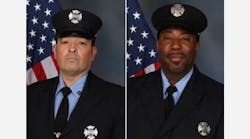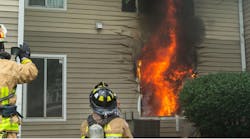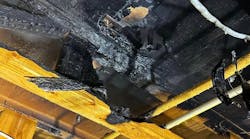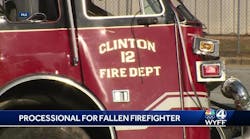Editor's Note: This point/counterpoint column is dedicated to fostering honest discussions about issues confronting the fire service today. It is not our intention to upset or anger anyone. Rather, our intention is to bring important and sometimes controversial topics to your attention and give you the opportunity to share your thoughts and offer your solution. We want to hear what you have to say. Feel free to agree or disagree. Make your voice heard as we work together on behalf of our fire service. Opinions/thoughts expressed in this column may not necessarily reflect the feelings of the Firehouse editorial team, and we share them here as discussion points only. Please login to propose solutions and offer feedback below.
Never before in the history of the fire service has as much attention been paid to firefighter safety as what has occurred over the past six years. In March 2004, the National Fallen Firefighters Foundation (NFFF) and U.S. Fire Administration (USFA) held the first Firefighter Life Safety Summit. This was a gathering of various fire service leaders, industry experts and other concerned folks who were apparently tired of killing more than 100 firefighters every year.The outcome of this meeting was a set of goals and a document. The goals were simple enough - reduce firefighter deaths by 25% in five years and 50% in 10 years. The document that resulted was the "16 Life Safety Initiatives."
The output of this meeting excited a lot of people in the fire service, and why shouldn't it? It sounded great. Who wouldn't want to save 25 firefighters per year in 16 easy steps? A community sprang up determined to make positive changes in the fire service. The fire service was engaged. Mini-summits occurred. Programs were created. Funding was established and everyone was confident. This was the action that was going to save the firefighters. Fewer tears would be shed, happier firefighters would be created and the Final Call would toll fewer times. We were going to put the black mourning band people out of business.
So how are we doing? To put it frankly, not well. Line-of-duty deaths fell slightly from 2004 to 2006, then began rising again in 2007. This can hardly be considered a success. Although 2009 did post 93 deaths, the lowest since the 93 fatalities recorded in 1998, the overall trend is flat or slightly increasing. Why is this the case? Given a clear, 16-step program, plenty of funding, intense focus and the backing of multiple national organizations, the fire service was unable to change the fire service. Firefighter safety was not some federal mandate or insurance requirement. No, the decision to reduce firefighter deaths was born of the fire service, by firefighters and fire chiefs. So why was this group unable to find even a shred of success? Because it failed to consider the customer.
The customer in this case is the fire service itself. The fire service itself hates change and the average firefighter resists change. The average firefighter does not travel to a different city to contribute his or her thoughts on firefighter safety. The average firefighter does not consider firefighter safety a real and pressing concern. The average firefighter may talk safety, but does not walk safety. The average firefighter, while certainly smart enough to understand the concepts, also rationalizes the disregard of those same concepts when on the fireground. The average firefighter lives comfortably in the "it won't happen to me" world. The average firefighter does not have a natural fear of dying, so the thought of surviving is not enough of a motivator to effect change. The truth is that even though so many people care about the prevention of line-of-duty deaths, the average firefighter does not.
We're certain that some of you will disagree with us about this, but the facts speak for themselves. All of the focus and attention has yielded no change. Firefighter safety was barely a suggestion in 2003. It was the Firefighter Life Safety Summit in 2004 that catapulted firefighter safety to the forefront, yet in 2003, the year before the Firefighter Life Safety Summit took place, there were 113 firefighter deaths. In 2008, there were 118 firefighter deaths. So back when we paid little or no attention to firefighter safety, we killed five fewer firefighters than we did after nearly five years of focused effort. What kind of plan is that?
If we were serious about preventing firefighter deaths, we would do things that are actually effective. Heart attacks are still the leading cause of firefighter deaths. Want to prevent some deaths? Establish physical fitness standards and adhere to them throughout a firefighter's entire career. If you fail to meet them, you're fired. Unemployed is far better than dead. You don't have to go far, however, to encounter departments that have attempted this, only to be met by staunch resistance from those who believe that the fat guys should not be forced to become fit. Forcing people to become fit and reducing their likelihood of dying constitutes a change in work conditions and it's not fair, the opponents argued.
If we were serious about preventing firefighter deaths, we would fire people who don't wear seatbelts in the apparatus. Twenty-eight firefighters were killed in 2008 in vehicle collisions. Where is the outcry? Why don't fire chiefs get serious about this issue? Make non-compliance a terminable offense. OK, so you may have to terminate a couple of firefighters before the idea catches on, but a few firefighters seeking new jobs are a fair trade for a few less firefighters killed every year. Unemployment is temporary; dead is permanent.
If we were serious about preventing firefighter deaths, residential sprinkler requirements would receive broader support than they currently do. If you want to prevent firefighter deaths, put the fire out before the firefighters get there. If we were serious, nothing would stop us from getting legislation passed. There are multiple fire service organizations that support residential sprinklers, but they are only vocal whenever the National Association of Home Builders (NAHB) becomes vocal in its opposition. If the NAHB speaks up, it gets whacked over its collective head by various organizations, yet when a Tennessee fire chief recommended that his city not adopt codes requiring residential sprinklers, there was barely a blip on the radar. It drew nary a reaction. Why?
The truth is, we are not serious. We toy around with the idea. We talk a big game. We create training programs, grants and keynote speeches, but it doesn't change anything.
What we need is a different plan. Reducing firefighter deaths would clearly be the best plan; however, that plan is clearly ineffective.
What if we took all the time, energy, effort and funding away from reduction and applied it to compensation? What if each time a firefighter dies, we remember, cry, pray and then pay? What if we simply made sure the survivors are taken care of? If you give each surviving spouse or each firefighter's estate $1.5 million, they could earn $120,000 annually (given historical investment performance) without touching the principal, so we will have addressed the salary and income issues. We could require state universities to provide free college tuition to surviving children, thereby taking care of college. An insurance policy could be acquired that would pay off the mortgage in the event of a line-of-duty death. The Public Safety Officer's Benefit (PSOB) would still pay out, so there is a one-time cash stipend as well. What's the problem here?
Redirect energy being invested in creating firefighter safety programs that will not be followed and focus it on fundraising. Redirect the money flowing into firefighter safety programs that will not be followed and focus it on compensation. It seems simple. The concept is applied in the insurance industry all the time. The insurance industry gets it. If you cannot prevent, you must prepare.
Of course, we're just trying to make a point here. We don't want anyone to stop making any efforts toward reducing line-of-duty deaths. But consider this: Do you live in Florida? You cannot prevent a hurricane; you can only prepare to pay for one. At some point, you must realize what you cannot prevent and merely prepare to compensate. Mother Nature does not listen - and neither does the average firefighter. Disagree? We would love to hear it. Tell us below.





